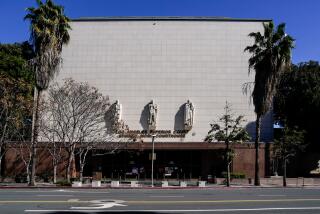Separate Judicial Fiction From Reality
- Share via
Americans have a great and recurring propensity to mythologize their political and legal institutions; as a result, we too often see institutions as they are not and miss what they are. Nowhere is this inclination more evident than in the rhetoric about the Los Angeles County Grand Jury.
One myth idealizes the grand jury as a group of civilians searching out wrongdoing (and wrongdoers) in county government through the process of “civil oversight.” The second myth depicts the grand jury as a rubber stamp for the district attorney, mechanically indicting whomever prosecutors wish to take to trial. After a year as foreperson of the 1995-96 Los Angeles County Grand Jury, I believe that both these concepts certainly meet one definition of myth (“an unproved or false collective belief that is used to justify a social institution”) and the widespread acceptance of these myths prevents an accurate perception of the real good that the grand jury contributes to the people of Los Angeles County.
In the first myth, the grand jury is seen as a group of independent overseers authorized to prevent gross abuse of the public trust. The “Mr. Smith Goes to Washington” scenario permeates this myth: that average citizens, exercising basic American common sense, dispense with the complex, bureaucratic, special-interest jargon of professionals. They see through the bureaucrats’ “charade” and simply correct wrongs. This is nonsense. Los Angeles County is too big, too diverse and has too many levels of bureaucracy for this characterization to be anything but fiction.
A grand jury, impaneled for one year, is made up of 23 individuals who have minimal staff, no investigative support and, in most cases, no investigative knowledge or expertise. To make accurate judgments about misuse of the public trust demands more than goodwill--no matter how bountiful. What is needed are skills in investigative techniques and financial methodology. If Los Angeles County were to rely on the grand jury for the prevention of fraud, thievery, malfeasance and other wrongdoing in goverment, the county would be badly served.
The second myth that obscures and minimizes the very real contribution of the grand jury is that the panel serves only as a mechanical indictment forum--a rubber stamp for the district attorney. If nothing else, this myth certainly misstates the life of a grand juror. If this perception were accurate, there would be no careful listening to hours of sometimes boring testimony; no careful evaluation of evidence; no extensive and often heated debate; no need for jurors to make independent judgments in the deliberative process. Our 1995-96 grand jury in a number of cases did not indict as requested. In some instances, it changed terms of the indictments and dropped possible targets from proposed indictments.
Grand jury indictments are an alternative to the preliminary hearing at which a judge rules that probable cause exists to try someone on criminal charges. The grand jury can be far more effective--and fair--in very complex cases or those in which witnesses may be endangered if their identities are revealed or in cases involving official misconduct or activities of organized crime.
No well-meaning reformer, ill-informed as to the reality and myth, should ever be allowed to diminish the benefits of the grand jury system in the criminal-indictment process. If any change should be made to the grand jury, civil oversight should be limited, not expanded. Allocating less time for civil oversight while increasing time for criminal proceedings would provide a significant benefit for our overcrowded justice system.
Let us value the grand jury as an institution for the right reasons; let us not try to make it something it cannot be.
More to Read
Sign up for Essential California
The most important California stories and recommendations in your inbox every morning.
You may occasionally receive promotional content from the Los Angeles Times.










